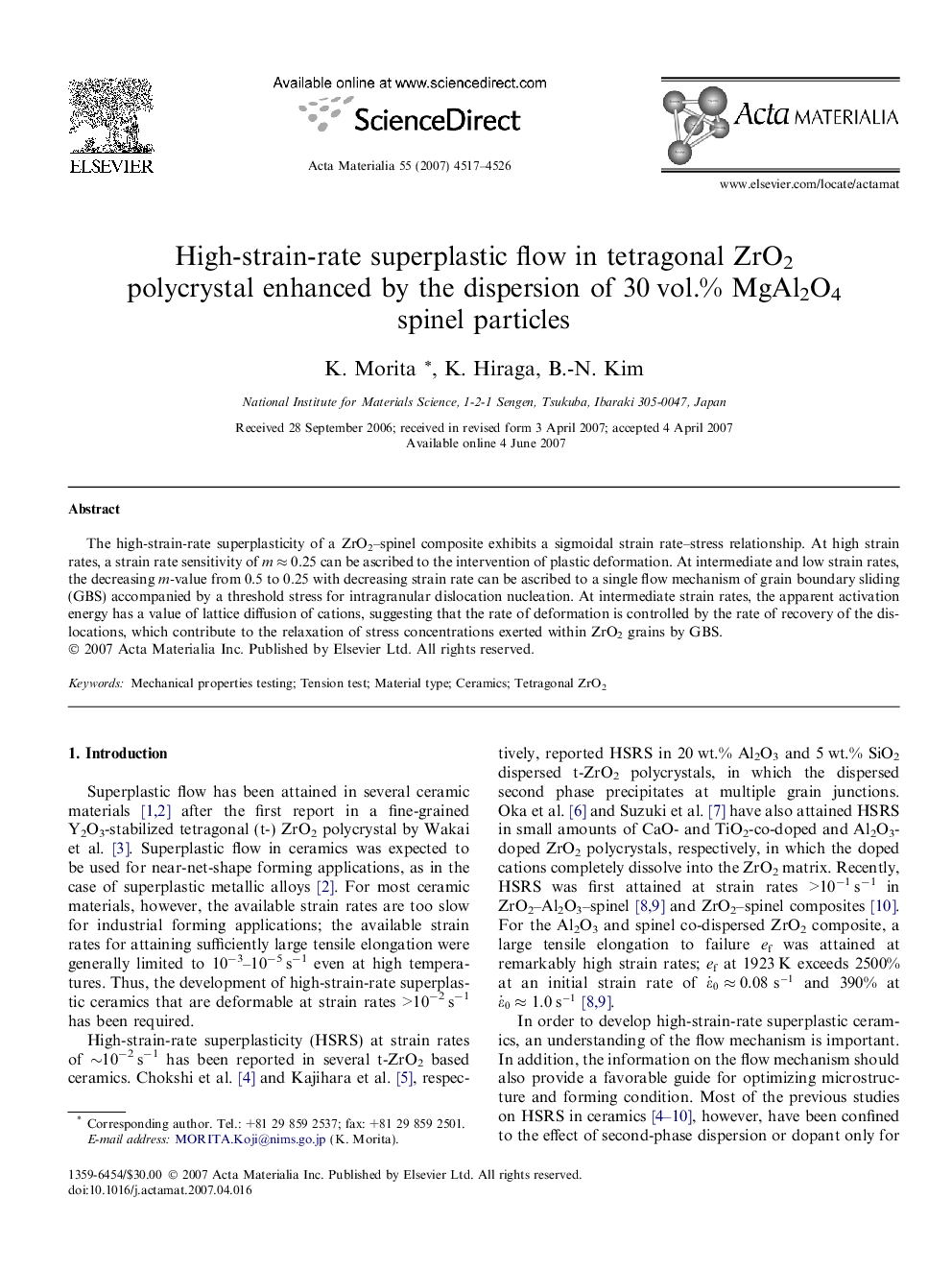| Article ID | Journal | Published Year | Pages | File Type |
|---|---|---|---|---|
| 10620853 | Acta Materialia | 2007 | 10 Pages |
Abstract
The high-strain-rate superplasticity of a ZrO2-spinel composite exhibits a sigmoidal strain rate-stress relationship. At high strain rates, a strain rate sensitivity of m â 0.25 can be ascribed to the intervention of plastic deformation. At intermediate and low strain rates, the decreasing m-value from 0.5 to 0.25 with decreasing strain rate can be ascribed to a single flow mechanism of grain boundary sliding (GBS) accompanied by a threshold stress for intragranular dislocation nucleation. At intermediate strain rates, the apparent activation energy has a value of lattice diffusion of cations, suggesting that the rate of deformation is controlled by the rate of recovery of the dislocations, which contribute to the relaxation of stress concentrations exerted within ZrO2 grains by GBS.
Related Topics
Physical Sciences and Engineering
Materials Science
Ceramics and Composites
Authors
K. Morita, K. Hiraga, B.-N. Kim,
